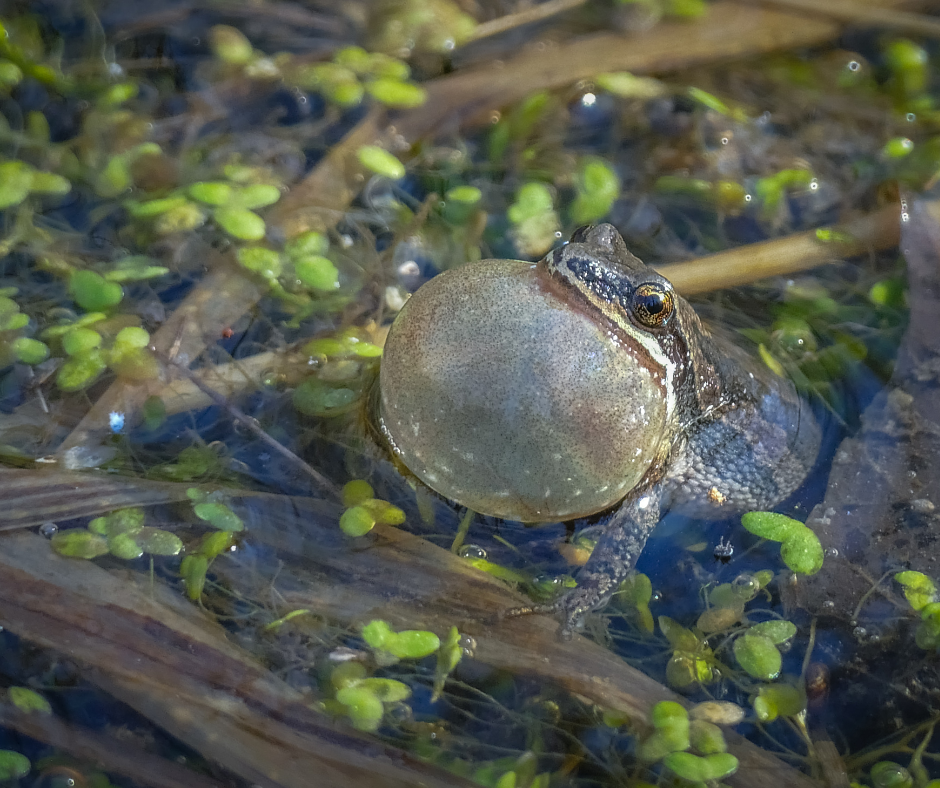Spring is in full swing at Dodge. Yellow-rumped warblers (affectionately known by our naturalists as “butter butts”) dart from branch to branch, flashing their bright yellow tail feathers. Trills from chorus frogs echo across the wetlands of the Main Property. The grounds are covered in flowers—tree flowers that is!

A chorus frog trilling in a wetland.
If you suffer from seasonal springtime allergies, trees are likely the culprit. Tree flowers look noticeably different from flowers in maintained gardens. Depending on the species of tree, they have different names as well.
One of the most distinctive types of tree flowers is the catkin. With their fuzzy, elongated shape, catkins are often mistaken for caterpillars. Trees such as cottonwood, willow, aspen, and mulberry all produce these unique blooms. Hanging from branches, catkins are a sure sign that the tree has begun releasing pollen, which is then carried by the wind to other trees.

Top left: Cottonwood catkin. Top right: Willow catkin. Bottom left: Aspen catkin. Bottom right: Mulberry catkin.
If you’re heading out on the trails soon, keep an eye out for catkins—you might even feel one land on your head as it drifts down from the trees. These fuzzy flowers may not be the classic spring blossoms you’re expecting, but they’re among the biggest blooms we see each year. So, the next time you sneeze, don’t forget to thank the trees!
Contributing author: Naturalist Michael Harrison
From the Trails is published monthly in our news & activities emails. Join our email list here.